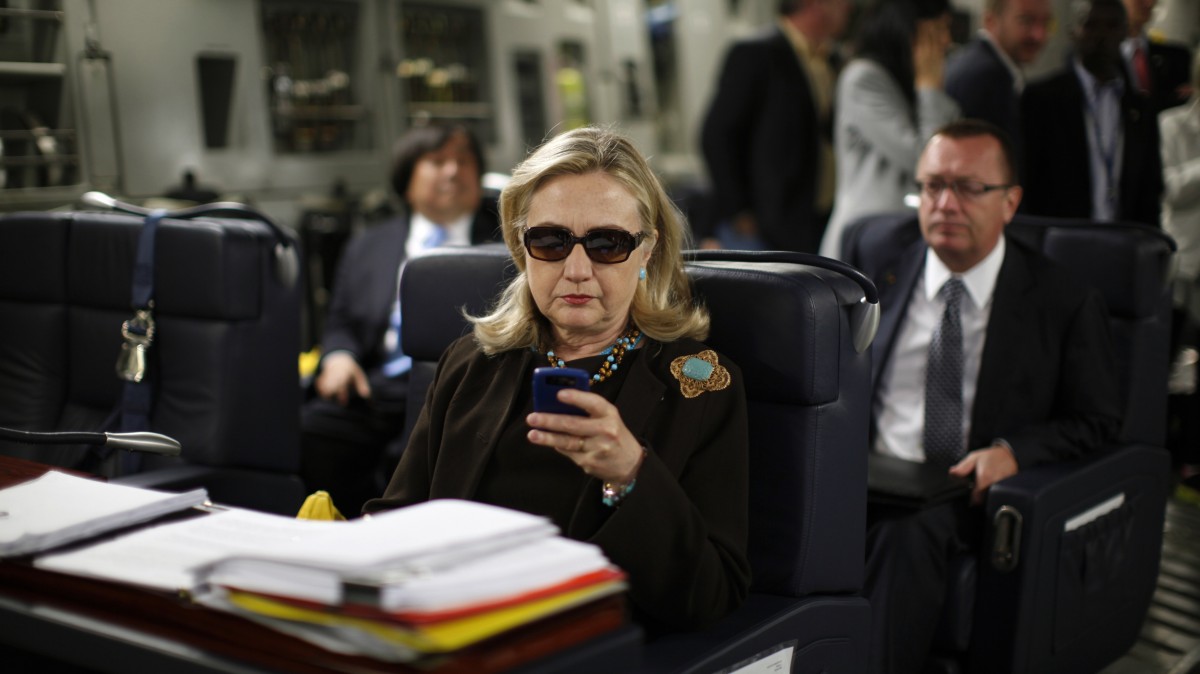
MINNEAPOLIS — With every election that goes by, U.S. presidential candidates increasingly see social media reach as a key indicator of their popularity, and a barometer as useful as more traditional forms of polling. One candidate in the 2016 election is already in the lead of the social media game in one key measurement: the number of fake followers to her Twitter account!
Vocativ reported Tuesday that Hillary Clinton’s Twitter account has more fake followers than any other candidate. Only 65 percent of her 2.3 million followers deemed legitimate by TwitterAudit, a tool which judges a Twitter account’s authenticity based on its number of tweets, the date of its last tweet and the ratio of its followers to friends.
Bernie Sanders and Donald Trump fared the best, with 90 percent of their followers deemed genuine. Both Trump and Clinton have over 2 million Twitter followers, while Sanders is still working to reach his first 70,000. The independent senator from Vermont is far more popular on Facebook, where he has 1.2 million followers.
Sarah Kaufman and Ryan Beckler, who wrote the report for Vocativ, note that fake followers could be spam or “bot” accounts unrelated to the political campaign, or they could be “accounts created by real people but with an agenda of spreading political advertisements.”
“But under both scenarios,” they write, “they are certainly not a genuine measure of candidate popularity.”
Candidates rely more than ever on social media
Some credit Barack Obama’s 2008 presidential campaign for being the first to make social media a key strategy, and the Clinton campaign has certainly been taking notes. However, Katie Dowd, the digital director for the campaign, told MSNBC last week how much has changed since 2008:
“Twitter, Facebook and smartphones are now ubiquitous; and our team will not underestimate their ability to revolutionize communication, engagement and organizing in modern campaigns.”
One unique strategy Clinton’s campaign tried last month was to let the owner of a small, New Hampshire-based business take over her Twitter account for a day.
Another key way that social media strategies have changed since Obama’s first campaign is that campaigns are expanding their presence onto more networks than ever before, and there’s a new emphasis on live content. Both Clinton and Jeb Bush used the popular social messaging app Snapchat to share news of their campaign kickoffs. MSNBC reported on Tuesday:
“On Saturday, Snapchat’s 100 million daily users saw in their feeds a ‘Hello, Hillary 2016’ live story highlighting moments from Clinton’s Saturday rally in Roosevelt Island. On Monday, Snapchat users saw a similar ‘Campaign 2016’ live story with images and scenes from Bush’s announcement event in Miami.”
“Every time a politician joins a social network, a news article comes out declaring that network could end up being the social platform of Election 2016,” wrote Joanna Brenner for Newsweek on Monday.
Republican candidates Rand Paul and Carly Fiorina have even experimented with Meerkat and Periscope, two cutting edge livestreaming apps. “Suddenly we’re in the throes of the Meer-i-scope Election,” quipped Brenner.
It remains to be seen whether voters will be as enthusiastic as the media about following the presidential field in the 18 months to Election Day, or whether candidates will be forced to stock yet more networks with pretend fans.

